Blank Renard Paper Warehouse Now Less-Blank Urban Chestnut Brewing Company
Renard Paper was building their massive blank walled warehouse on Manchester Ave in 1990, right when I moved to St. Louis. It was awful, but many saw it as progress. It was an investment, they weren’t leaving the city.
Fast forward to May 2011, the ribbon cutting for the new Manchester Ave streetscape in the section known as The Grove. Renaud Paper’s boss, Dave Renard was among the speakers talking about the vibrant area even though his own warehouse, built 21 years earlier, was a huge drag on the vibrancy at the west end of The Grove.
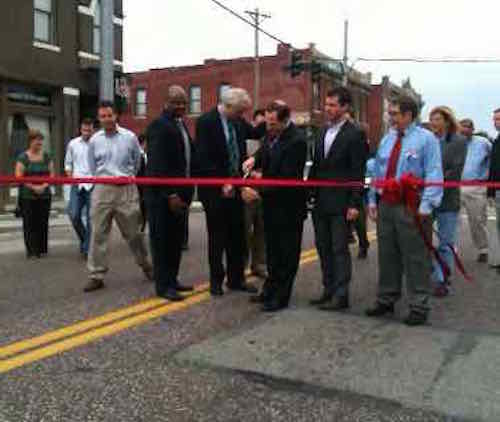
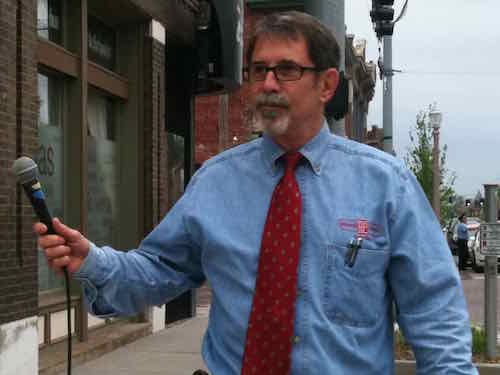
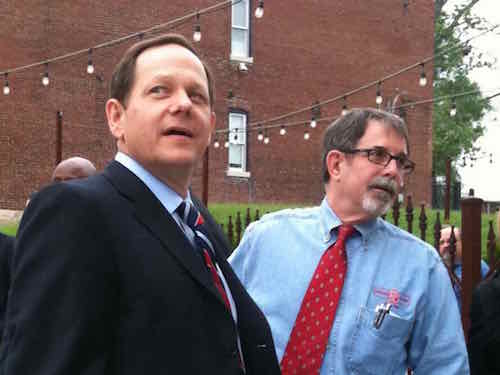
That was May 19th, less than four months later came this news:
HP Products Corporation of Indianapolis, IN has announced that they have completed the acquisition of Renard Paper Company of St. Louis, Missouri.
A done deal not even four months after talking about the future…
It wasn’t long before Renard Paper, now a division of HP Products, was located out in Earth City. Their large building with a long blank wall fronting Manchester Ave was now for sale. One argument is they were in the city paying earnings taxes for 21+ years longer than had they sold out in 1990. True enough. What we can’t possibly know is where would that end of The Grove be had Renard Paper not razed buildings to build their warehouse? Who knows, that section might be the most vibrant part. The street might have come back to life years, decades, earlier? Or the area might’ve declined further and be worse than ever to this day?
Again, it’s impossible to know.
After sitting vacant for nearly two years a new buyer was found that could use the warehouse space, but they also wanted to correct the main design problem: the long blank wall.
Urban Chestnut’s renovation of the Renard Paper warehouse will include a bottling line, staff offices, retail space, a kitchen and bar area, and seating for about 150 people. Windows will look out on to Manchester Avenue, and the bar will face the brewhouse. (Post-Dispatch)
The silver lining is by leaving such a warehouse Urban Chestnut was able to greatly expand their capacity. They also knew design facing Manchester Ave was important, the building’s exterior had to be altered. I couldn’t find my before pictures but you can see some Google Streetview screen captures here. I suppose Urban Chestnut did the best they could.
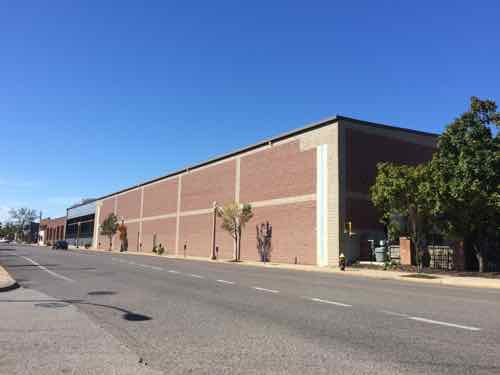
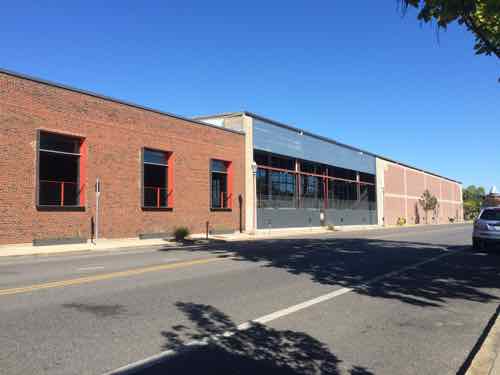
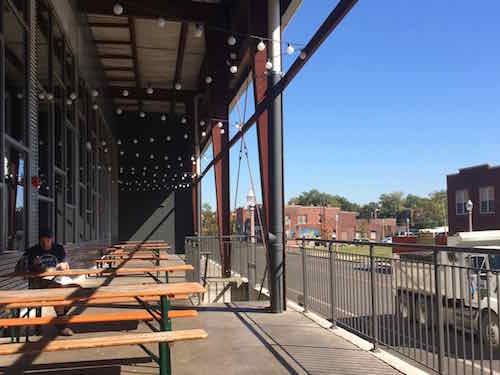
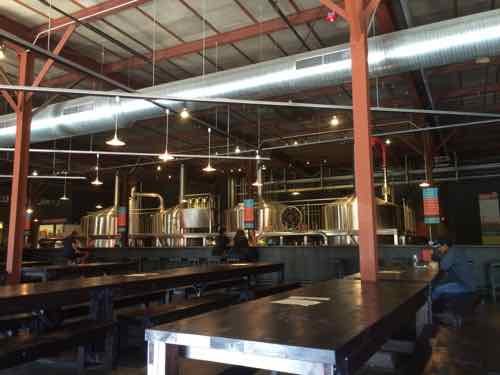
The lesson here is most newer buildings cost so much to construct the reality is it’s unlikely they’ll be razed to may way for something better in 20 years, so if you get it wrong now you’re mostly stuck with it long after the company sells out and leaves town. Short-term gain can be a long-term net negative. Urban Chestnut has basically neutralized this 1990 warehouse.
Every new building must be designed with enough long-term vision to think beyond 20 years, when the owners retire and cash out.
— Steve Patterson